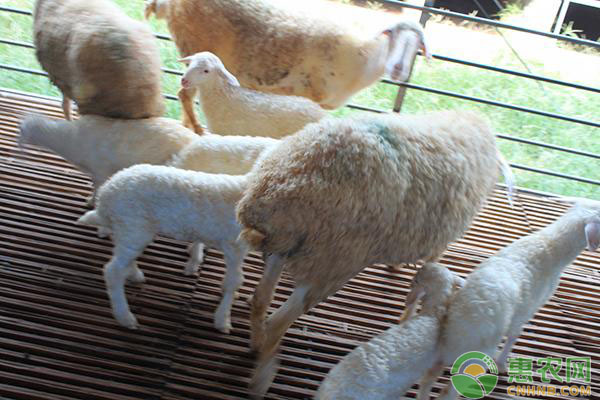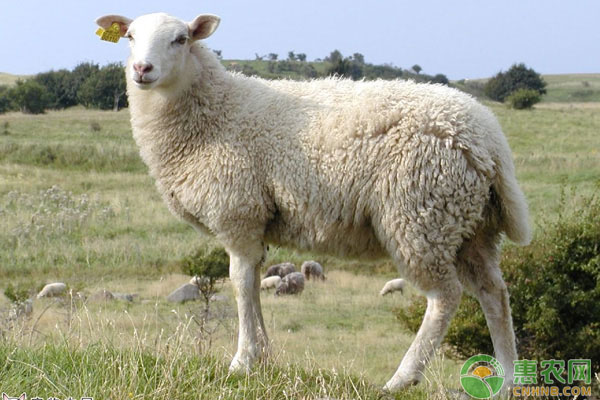How can lambs be raised to achieve high benefits? From the age of 2 months, it is necessary to improve the quality of the feed. Through scientific feeding management, by 4 to 6 months of age, the body weight can reach more than half of the annual sheep, and it can be slaughtered and listed. At this time, the lamb meat is high in protein, low in fat, fresh and juicy, rich in nutrients, and has good breeding efficiency. This article mainly talks about the comprehensive technical measures for rapid fattening of lambs. First, strengthen the feeding management of the lamb before weaning 1. Eat colostrum as soon as possible Lambs should eat and eat colostrum as soon as possible after birth to enhance physical fitness and immunity, and lay the foundation for future strength fattening. A good-looking lamb, after birth, can find the teat and eat colostrum; for the weak lamb, the necessary artificial assistance is needed. 2. Early food, early feeding After 10 days of birth, the lamb will be able to eat ad libitum. At this time, it is necessary to consciously feed the lambs. Choose fresh grass, hay or silage with high nutritional value and easy to digest, and prepare it appropriately, such as shortening, chopping, smashing, granulating, etc., feeding the lamb and supplying appropriate concentrate. You can also use carrots to mix the essence and induce the lamb to start eating. Large-scale sheep farms can be lubricated with high-quality milk substitutes. The lambs are fed after the feeding, and then eaten by the ewes to prevent waste. In this way, after a period of time, the lamb will feed on its own. Slowly, the rumen of the lamb will begin to develop, and the function will gradually improve, and the fodder can be eaten freely. 3. Lamb suckling After the lamb is 2 months old, the lactation of the ewe is gradually reduced, and the lamb should be supplemented. Free access to roughage, such as high-quality green hay, ground straw feed, silage, etc., supplement the mixed concentrate 2 tons, 100~200g per meal. In management, we must always keep the sheep house, sports field and feeding trough clean and dry, warm in winter and cool in summer, not snow in winter, and shelter from wind and rain in summer. 4. Weaning and grouping One week before weaning, properly reduce the supply of concentrate to the lactating ewes, and feed less green and juicy feed to reduce the amount of lactation to prevent mastitis after weaning. When the lamb is 1.5 to 2 months old, the ewes can be removed and weaned at one time. After weaning, in addition to being used for seeding, the rest of the lambs are reared by sex, physical strength, and individual size. Second, the rapid fattening of the lamb 1. Choose fattening lamb Lambs that are quickly fattened are preferably born from early-maturing ewes. Multiple births and fast lengths are the best choices. In addition, the hybrid generation of fast-length rams with local ewes has obvious heterosis and is the best choice for fast fattening lambs. The fast-long rams are Dorset, Boer goats, etc. They can use their semen particles to artificially inseuce local ewes, and all the hybrid lambs are used for rapid fattening. In addition, local ewes are generally bred in the fall, lambing after 5 months, is in the winter or early spring. At this time, when the high-quality forage grass is not connected, it is necessary to make plans early in the year to prepare high-quality forage. 2. Feeding in time after grazing Lambs that are fattened by grazing and supplement feeding can begin to graze in the wild in March and May. Choose a quality pasture, go out early and return late, graze all day. After harvesting or dry season, it is necessary to supplement the mixed concentrate appropriately, and supply 40~100g per day according to the body weight. The mixed concentrate formulation can be formulated according to local conditions. Such as: corn 55%, soybean meal 33%, yeast powder 2%, bran 8%, salt 1%, sodium hydrogen phosphate 1%. The mixed concentrate is preferably made into granules, and the corn is directly used in the granules without breaking. 3. Feeding and fattening When using green fodder for house feeding and fattening, green hay and corn stalks are freely fed after being chopped, chopped, etc., and roughage containing higher crude fiber such as straw and wheat straw is preferably alkalized, ammoniated, puffed, etc. Use it after processing. Silage can also be used in the late fattening period. The key to feeding and fattening is to supplement the feed of the concentrate after freely eating green roughage such as hay. For the formula of supplemental feed, please refer to: corn 66%, biscuits 22%, bran 8%, bone meal 1.5%, salt 1.5%, urea 1%, and add appropriate amount of trace elements and multivitamins. According to the weight, 500-900g is added every day. Free drinking water. Third, strengthen the management of fattening lambs Before the rapid fattening, the lambs were fed with 0.2 g/kg body weight of worms and 10 mg/kg body weight of levamisole to remove parasites from outside the body to ensure the safety of the fattening period. Before fattening, do a good job of stocking and processing of feed, and actively promote the treatment of alkalizing, ammoniation, silage, and puffing of roughage to ensure that materials are constantly being fed and not refueled during fattening. Ensure adequate clean and safe drinking water. The house is often cleaned, disinfected and kept hygienic. According to the fattening situation of the lambs and the market conditions, it will be released at a time. Immunization Using Cell Culture Based Rabies Vaccines Rabies is a viral infection transmitted by saliva of infected mammals, most commonly wild, terrestrial carnivores (e.g., skunks, raccoons, foxes, coyotes) or bats. Immunization Using Cell Culture Based Rabies Vaccines,Based Rabies Vaccines,Cell Culture Rabies Vaccines,Cell Culture Based Rabies Vaccines Changchun Zhuoyi Biological Co., Ltd , https://www.zhuoyibiological.com

